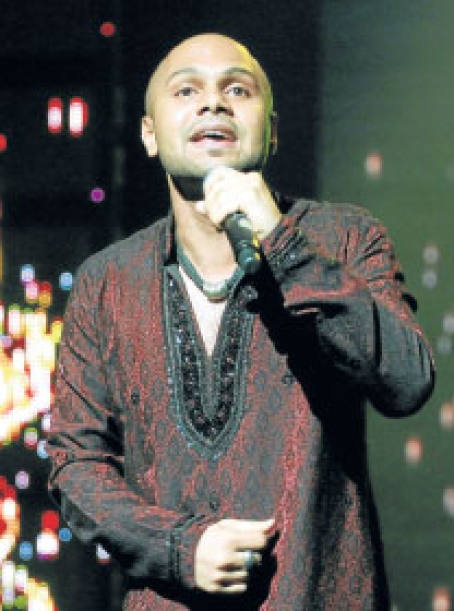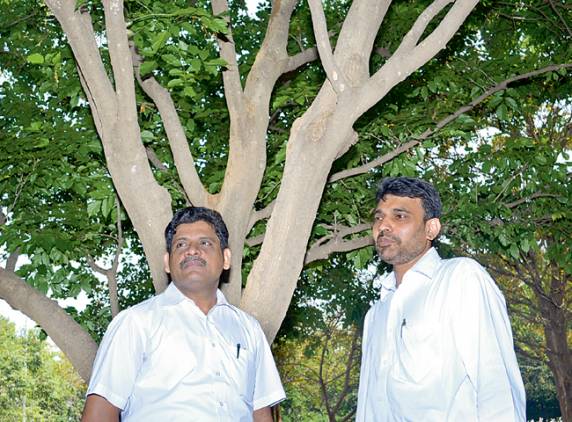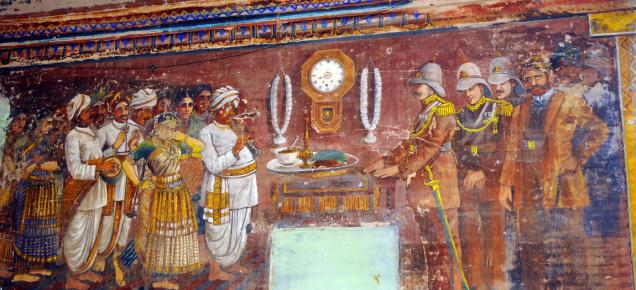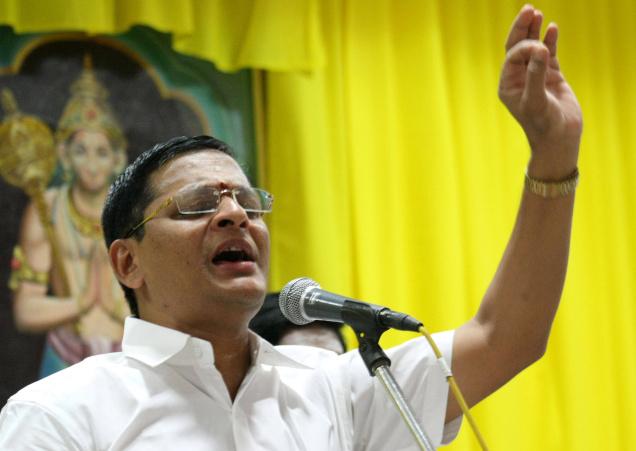A festival that celebrates the diversity of Southeast Asian music illuminated Istana Budaya for two days, writes Dennis Chua

MK delivering a powerful Tamil number
The last day of February 2012 will go down in Southeast Asian history as one where the region got together for reportedly its biggest celebration of music in Kuala Lumpur’s splendid Palace Of Culture, Istana Budaya.
Musicians from the Association Of Southeast Asian Nations (Asean) member countries — Brunei, Cambodia, Indonesia, Laos, Myanmar, the Philippines, Singapore, Thailand, Vietnam and this country — brought joy to and garnered applause from the national theatre’s 1,000-odd audience at the Asean Musical Extravaganza 2012 on Feb 29 and March 1.
The extravaganza, organised by the Information, Communication and Culture Ministry, was attended by Prime Minister Datuk Seri Najib Razak and Information, Communication and Culture Minister Datuk Seri Dr Rais Yatim.
It was organised in conjunction with the 11th annual Asean Ministers Responsible For Information (AMRI) Conference 2012 in KL.
The member countries introduced their performers in alphabetical order, beginning with Brunei and ending with Vietnam.
As host, Malaysia showcased three popular singers representing the country’s three major communities.
They were One In A Million 1 champion Suki Low, popular Tamil singer MK and the country’s pop king Jamal Abdillah.
Dressed in elegant purple, Suki delivered an outstanding rendition of the Chinese song Beauty Within.
Sporting a new, short hairdo reminiscent of Jaclyn Victor, the singer from Seremban showed fans across the region that she was “growing with her music”.
Not only did she shine in her Chinese number, Suki also delivered a perfect rendition of Joget 1Malaysia, a remake of the 1960s hit Joget Malaysia made popular by Tan Sri P. Ramlee and his wife Puan Sri Saloma.
And she had the perfect singing partner in Jamal, who with MK nicely complemented Suki as the male voices of the patriotic joget.
Jamal received a standing ovation for his spiritual song, Samrah Mentari, dressed in a golden baju Melayu and sporting a moustache.
His deep, caressing voice was as good as ever, and the 26 backup dancers from the theatre’s troupe were stunning in their whirly footwork and stylish in their green, gold and red Egyptian-style dresses.
MK did not disappoint either. He delivered a powerful Tamil number, Ravanah Veera, which was an ode to heroism and the victory of good over evil.
Brunei’s 11-man traditional music group Senandung Darussalam, with six kompang players, a guitarist and four dancers, performed some spiritual Hadrah songs. Their performance was a combination of modern popular music and traditional religious hymns.
The group was formed in 1985, a year after Brunei’s independence.
Cambodia’s King Music Band, with two vocalists, two guitarists, two xylophonists, a keyboardist and a drummer, delivered two melodious songs that are hugely popular back home.
They were Dancing At Angkor, which celebrated the country’s most iconic temple Angkor Wat, and Phnom Penh, an ode to the Cambodian capital city composed by the country’s former monarch King Norodom Sihanouk.
Indonesia thought out of the box by introducing a Minangkabau dance titled Sabalah. Performed by seven female dancers of 30-year-old cultural troupe Krida Budaya, it told the story of black mushrooms and their growing process in the tropical rainforest.
The ladies were elegant in green and gold blouses, colours that reflected the rainforest and sun. And they also wore large black skirts that reflected the mushrooms’ umbrella-like formations.
Laos chose a straightforward performance with the KL-12 Lao Pop Stars, a special musical project for the festival that combined the talents of the country’s best musicians and vocalists.
KL-12 had a sweet-sounding vocal quartet, backed by a guitarist and drummer with gusto. The group performed two Laotian songs about human values, Ban Mea Hao and Ban Kird Hao.
Myanmar proved the most entertaining guest that evening by presenting the traditional Myanmar opera U Shwe Yoe And Daw Moe.
Bearing an uncanny resemblance to our own dondang sayang, makyong and Chinese opera, this performance focused on a middle-aged man and his no-holds-barred wife.
The dancers’ acrobatic yet graceful movements delighted the audiences, as did the four musicians who complemented them with three traditional drums and a traditional flute.
Myanmar also presented the Kayin Doan Dance, a traditional dance by the country’s Kayin community from the east.
The Philippines gave audiences a performance out of the ordinary by the Diwa De Leon group, Hegalong Project.
De Leon, a gifted and popular folk musician, is the country’s master of the hegalong, a home-grown lute.
His group comprising percussionists Frances Escape and J P Hernandez and vocalists Abe Dalena and Zob Reyes delivered two haunting songs, Moon Rise and the instrumental Stormy Night.
Fans loved the Hegalong Project, for it showed a whole new side of Philippine popular music, one that was rooted in the hills, mountains, countryside and tradition.
Singapore’s instrumental quintet Five Elements was a show-stealer too. Comprising conductor-cum-flutist Ghanavenothan Retnam, accordion player Ismahairie, pipa player Chin Yen Chien, erhu player Shunta Goh and percussionist Sai Akhilshwar, it performed the souful songs Ode To Joy, Fast Forward and Shanti, and the upbeat Joget.
Thailand paid homage to its King with the Royal Dance Troupe. Its nine members performed a traditional dance drama Lakhon and a traditional mask play Khon.
The troupe also performed the song Falling Rain, a composition by King Bhumibol Adulyadej.
Vietnam’s National Academy, with 10 musicians on the traditional Trung, flute, zither and monochord, belted out traditional tunes that reflected the country’s beautiful landscapes.
The group’s vocalist also sang a moving Ode To The Missing Loves, which is a United Nations Educational, Scientific And Cultural Organisation (Unesco) heritage of the country.
Throughout the two-hour showcase which began at 8.30pm, the Malaysian Traditional Orchestra’s 86 members did a splendid job backing up every performance. Likewise the Istana Budaya dancers who opened the showcase with a traditional joget.
Last but not least, every performer got together at the grand finale to sing the Asean anthem Under The Asean Sky to roaring applause from the VIPs and fellow guests.
Showcase of diversity
THE Asean Musical Extravaganza 2012 is the first celebration of music from all 10 member countries of the Association Of Southeast Asian Nations (Asean) in Malaysia.
It is the brainchild of Information, Communication and Culture Minister Datuk Seri Dr Rais Yatim and organised by the Ministry of Information, Communication and Culture in Istana Budaya, Jalan Tun Razak, Kuala Lumpur.
Held in conjunction with the annual Asean Ministers Responsible For Information (AMRI) Conference 2012, it is aimed at showcasing the diversity of musical traditions from Asean member countries Brunei, Cambodia, Indonesia, Laos, Malaysia, Myanmar, the Philippines, Singapore, Thailand and Vietnam.
And for host country Malaysia, it introduces music lovers to the budding musical and dance talents from fellow Asean countrie
source: http://www.nst.com.my / New Straits Times / Sunday Life & Time / by Dennis Chua, dchua@nst.com.my / March 04th, 2012



